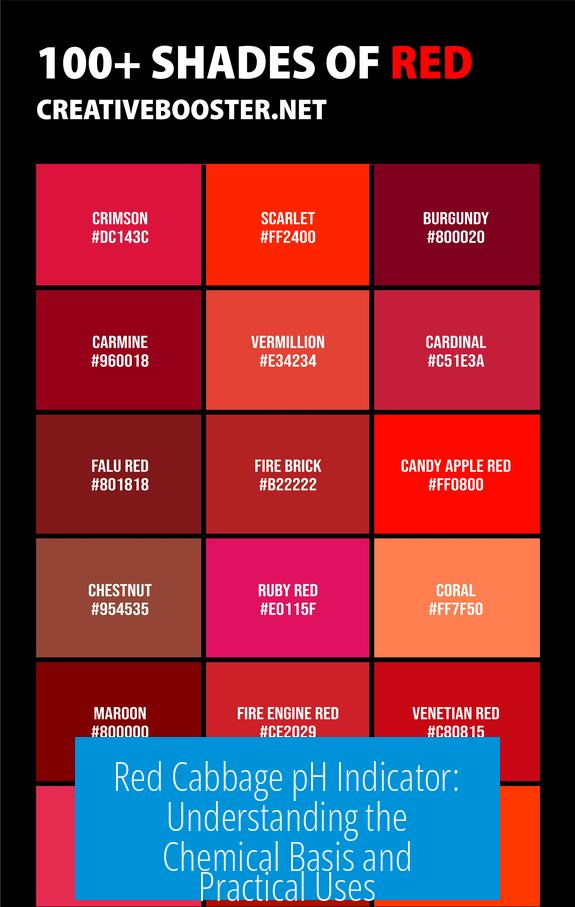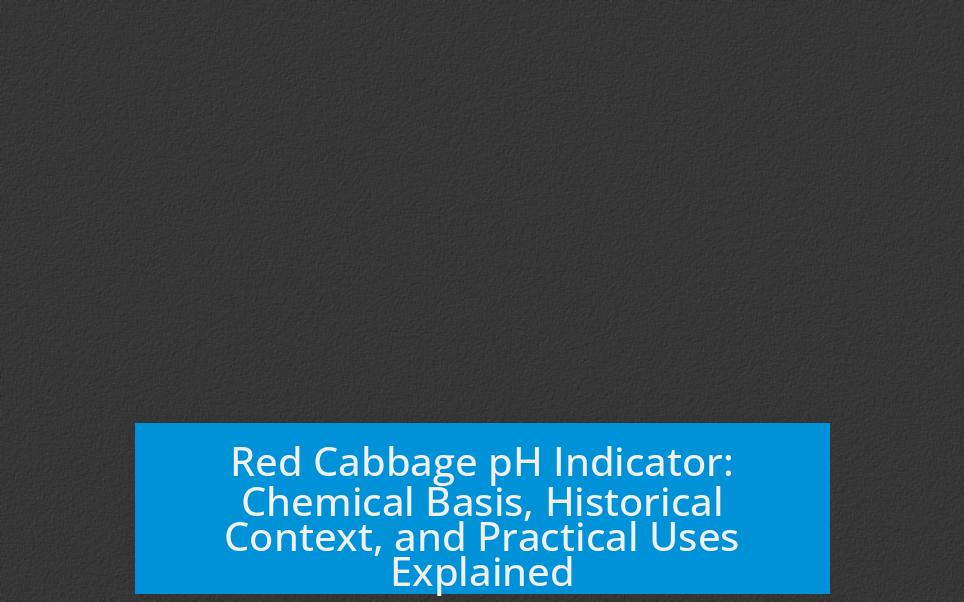Red Cabbage pH Indicator: Understanding the Chemical Basis and Practical Uses

The red cabbage pH indicator changes color due to anthocyanin, a pigment that reacts with acids and bases, altering its visual appearance. This color shift enables one to determine if a solution is acidic, neutral, or basic.
Chemical Basis of Color Change
The pigment responsible for the color change in red cabbage juice is anthocyanin. Unlike flavin, which some might mistakenly believe to be the cause, anthocyanin’s molecular structure responds to hydrogen ion concentration shifts. In acidic environments, the pigment appears red or pink, while in neutral conditions it shows as purple. Under basic (alkaline) conditions, it turns greenish or blue. This visually distinct range of colors makes it a practical pH indicator in simple chemistry demonstrations.
Historical Context
The use of red cabbage juice to indicate pH dates back to at least 1784. James Watt documented a method for preparing a test solution that shows the presence of acids and alkalies. This historical note underscores the longevity and reliability of red cabbage as a natural pH indicator.
Educational and Experimental Applications
- Middle and high school students often prepare red cabbage indicator by boiling the cabbage and collecting the juice.
- This juice can test common household acids like lemon juice or vinegar, and bases such as baking soda dissolved in water.
- Teachers use this indicator in classrooms to visually demonstrate acid-base reactions, often with hands-on activities that engage students.
- Red cabbage indicator can also illustrate environmental topics, such as ocean acidification, by blowing air into the solution to simulate carbon dioxide absorption and subsequent color change.
- Some laboratories incorporate this as a public outreach tool, demonstrating chemistry basics to visiting children.
Practical Observations & Variations
The color changes are not only theoretical. For example, during the fermentation of kimchi made from red cabbage, the pH drops, causing the indicator’s color to shift towards red shades. This visible change reflects acid production in the fermenting process.
Other plants with pigmented compounds like berries can also serve as pH indicators, sometimes offering more pleasant scents compared to cabbage extracts.
Common Questions and Clarifications
- Does soil pH affect cabbage color? The cabbage itself does not show blue in basic soil, as the pigment is mainly in the juice extract, not the plant’s visible leaf color.
- Is the indicator precise? It serves as a general litmus-like test, indicating acidity or basicity but not specific pH values.
- Is it safe to consume? The juice is derived from edible cabbage; mixing with natural acids like lemon juice is generally safe. However, it is important to avoid contaminants.
Summary of Key Points
- Anthocyanin pigments cause red cabbage juice to change color at different pH levels.
- Red cabbage indicators date back to 18th century scientific observations by James Watt.
- It is widely used in education to demonstrate acid-base chemistry.
- Practical examples include monitoring fermentation and environmental pH changes.
- The indicator provides qualitative, not precise, pH readings and is generally safe for experimentation.
What causes the color change in red cabbage pH indicator?
The color change happens because of anthocyanin, a pigment in red cabbage. This compound reacts to acids and bases, shifting color accordingly.
Can red cabbage juice indicate precise pH values?
No, it works more like a litmus test. It shows if a solution is acidic or basic but does not give an exact pH number.
How can red cabbage indicator demonstrate ocean acidification?
Blowing air into the indicator simulates carbon dioxide absorption. This causes it to slowly change color, mimicking ocean acidification effects.
Is it safe to consume red cabbage indicator mixed with lemon?
Since it is just cabbage juice and lemon, it is generally safe to drink. However, it is best used for experiments, not regular consumption.
Does cabbage grown in basic soil affect the indicator color?
The cabbage’s growing environment does not turn the cabbage blue. The color change occurs only when the juice interacts with acids or bases.





Leave a Comment